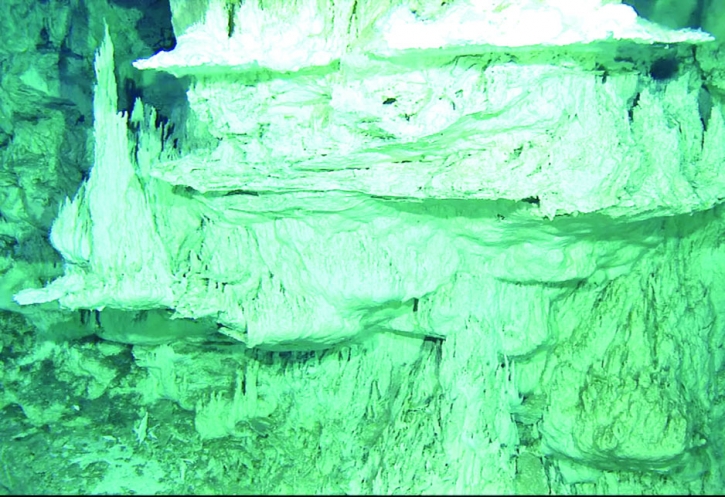
In the deep waters of Earth's oceans, scientists have discovered a new species of bacteria flourishing in the plumes from submarine hot springs.
Such hot springs likely also exist on oceanic worlds like Jupiter's moon Europa and the Saturn satellite Enceladus, so these observations sharpen our understanding of the forms alien life might take on those moons, astronomers say.
The newfound bacteria, Sulfurimonas pluma, belongs to a family of organisms that to date had only been known from volcanic vents on Earth's seafloors, as it cannot tolerate high oxygen levels in water elsewhere. So scientists were surprised to find a new member, smaller than its relatives, burgeoning in oxygen-rich water plumes hundreds of meters away from them.
"It was a crescendo of excitement to see that these microorganisms were not only abundant but also highly active in the plume," Massimiliano Molari, a scientist at the Max Planck Institute for Marine Microbiology in Germany, told Space.com in an email. Molari was the lead author of the latest study, which found that S. pluma has gone through unique genetic changes that allows it to not only adapt but also thrive in a broad range of environments in Earth's oceans.
One of those genetic changes has made the bacterium capable of getting energy from many sources, which is why it is abundantly seen near hydrogen-rich vents at the seafloor as well as oxygen-rich plumes thousands of kilometers away, scientists say. Researchers found that the organism mainly uses hydrogen to multiply and grow ubiquitously. "This was never observed before in this type of environment," Molari said.
The global presence of this flexible organism in Earth's oceans "removes an intellectual barrier from our ability to conceive that something comparable could arise elsewhere in the solar system," Chris German, a senior scientist at the Woods Hole Oceanographic Institution, told Space.com in an email. German was not involved in the study.
This is an exciting find, because NASA's Cassini mission, which studied Saturn and its moons from 2004 to 2017, found hydrogen in the jets erupting from Enceladus' south pole when it flew through them, suggesting active hydrogen-rich hydrothermal venting at the bottom of the moon's ocean, like those on Earth.
Hydrothermal vents form when cold, oxygen-rich seawater seeps into cracks in Earth's crust and hisses back out as soon as it meets the underlying hot magma. The heat triggers chemical reactions that remove oxygen from the water, so it returns to the ocean losing oxygen but gaining other minerals necessary for microbes to grow.
Scientists split what happens next into two stages: the resulting hot plume rises hundreds of meters upward from the seafloor until it runs out of steam. Then, the plume spreads horizontally for thousands of kilometers, during which time it becomes oxygenated, thanks to mixing with the surrounding oxygen-rich seawater.





































